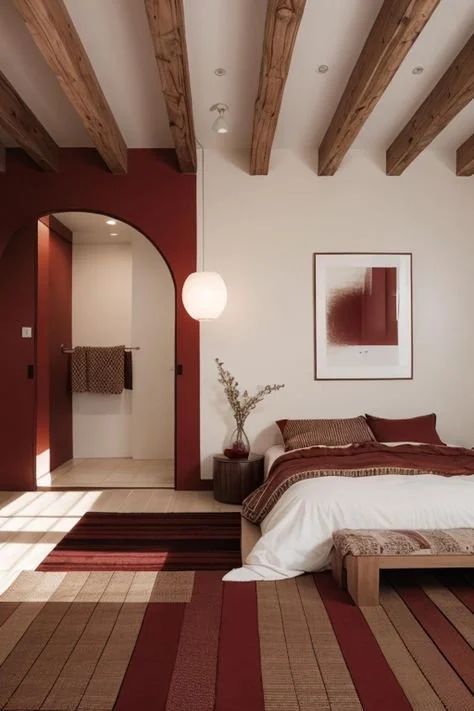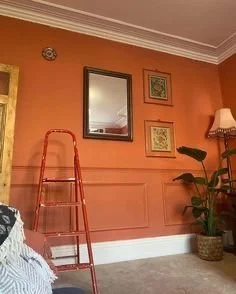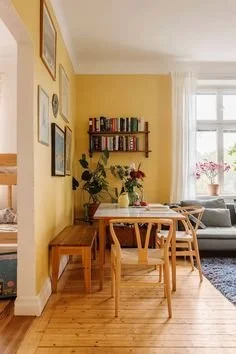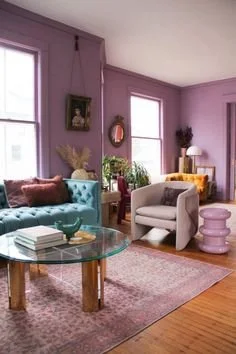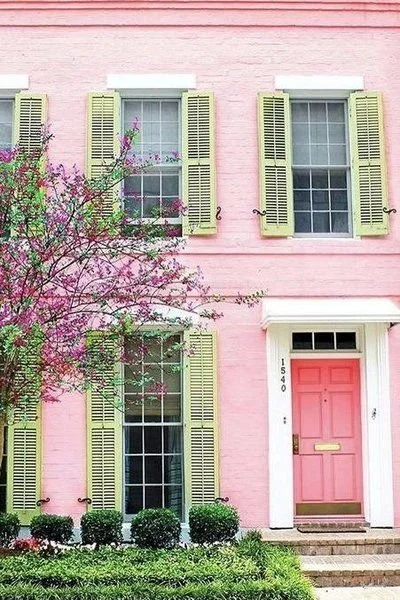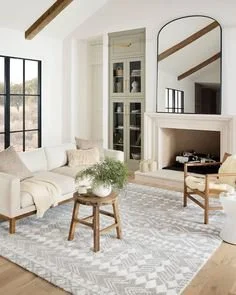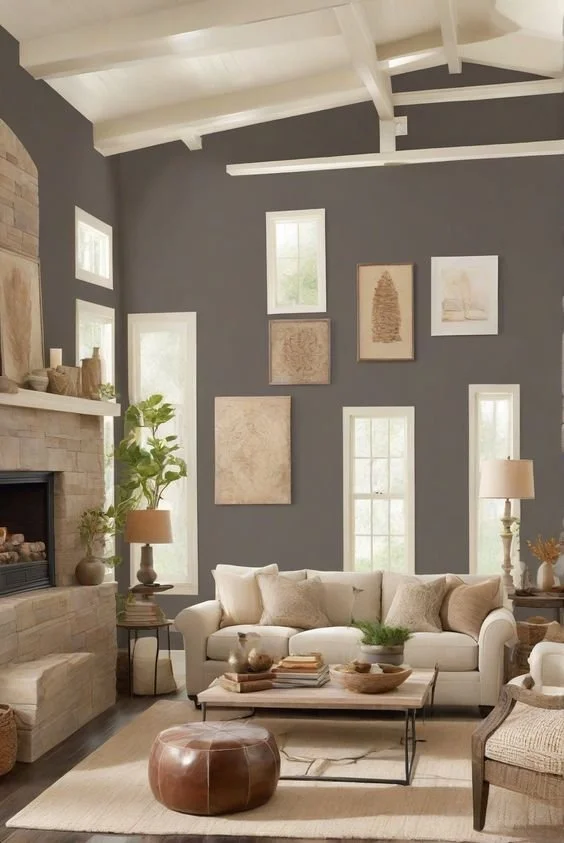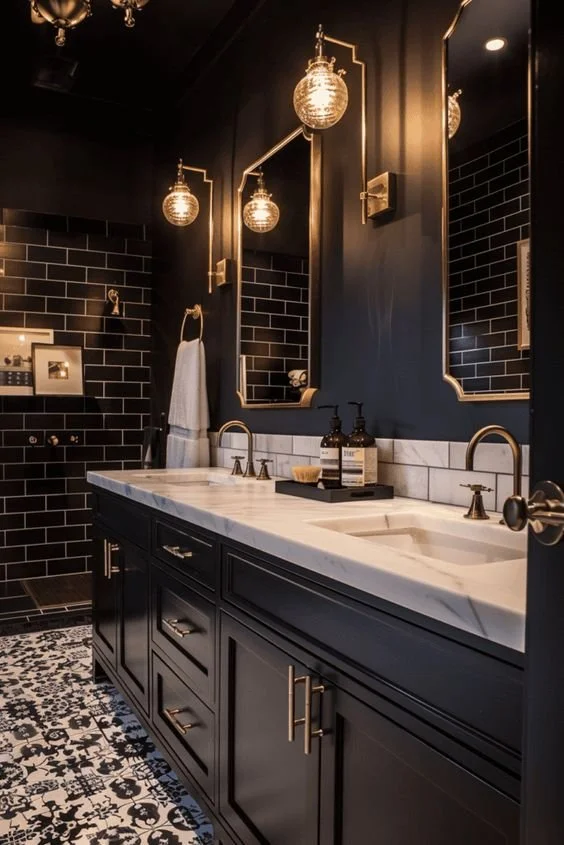The Psychology of Color
How is color affecting us in our daily lives?
Colors are known to make or break a room, but is it really that serious? Colors have a profound influence on our moods, emotions, and perceptions within different rooms and spaces. Certain hues of colors can energize and stimulate, while others have a calming and soothing effect. The right color choices can create a desired ambiance, whether it's a lively and vibrant atmosphere for social gatherings or a tranquil environment for relaxation and rejuvenation. Choosing the right color for a room can almost guarantee an automated emotional response to a room. Now let’s see how an array of colors affect people and areas.
Red
Red is an intense and stimulating color that raises the energy levels of people and rooms. It increases heart rate, blood pressure, and respiration. Red dining rooms and kitchens can help to stimulate appetite and conversation. In addition, red living rooms and entryways help to create a strong first impression. Red is known to be related to emotions of love, passion, strength, anger, and power. It can be important to factor red into the decision of what color certain areas and rooms should be when deciding on a paint color. Red can be uplifting for both the body and the mind, which can be very important to people in their daily lives.
Image from Pinterest
Orange
Orange, a close color to red, also helps stimulate your appetite, which is why it's often used in dining areas or kitchens (Culinary Arts). It can create a warm and inviting atmosphere for meals and gatherings. Depending on the type of room you want to create, orange comes in various shades and tones, from soft peach to bold tangerine; this versatility allows it to adapt to different design styles and preferences, making it suitable for both contemporary and traditional interiors. Another important reason that could be important for outdoorsy people is, shades of orange reminiscent of autumn leaves or sunsets can evoke feelings of nature and the outdoors, bringing a sense of warmth and comfort to indoor spaces.
Images from Pinterest
Yellow
Yellow represents happiness, optimism, and warmth. Light yellows are uplifting and help bring in more light for kitchens, entryways, hallways, and bathrooms. When choosing yellow for a room, it is a smart choice when you have a room with no windows to give the stimulation of light for the brain (HGTV). It stimulates our bodies' creative process, which can help us get “unstuck” and make quick decisions. However, choosing the shade of yellow that fits with the environment around can be challenging. "Yellow is a tricky color," says interior designer Jennifer Agus of Agus Interiors. "It's an uplifting color but you really have to pick the right shade. You want to make sure it's not too bright or too muted, so use those test cans of paint and look at the yellow on your walls in the different lights of the day." The warmer tones create a more comforting or uplifting mood, whereas the lighter more lemony looking tones can be too direct.
Image from Pinterest
Green
Green is a restful and calming color reminiscent of nature. It's suitable for most rooms, and promotes comfort and togetherness in living rooms. As well as, a cool refreshing ambiance in kitchens. However, darker green can create a more looming effect on a room. Dark green or olive green in bathrooms or showers whether it be paint or tile can help create a cooling or relaxing atmosphere for people to enjoy in their daily lives. Tying in plants with a green room can help create a more outdoorsy feeling inside of a no windowed room or bathroom.
Image from Pinterest
Blue
Blue has a soothing and relaxing color that can have effects that improve focus and productivity. Blue rooms are known for helping inducing sleep, enhancing other colors, and reducing blood pressure. Blue is seen as a sign of stability and reliability. Businesses that want to project an image of security often use blue in their marketing efforts to achieve this vision. Not only can it be a positive color for businesses to use, it can enhance a room with limited space to make it feel expanded. This makes all different shades of blue, but mostly lighter blue, popular within kitchens. It is said that blue is a timeless color that never goes out of style. It can be used in virtually any design scheme, from traditional to contemporary, and pairs well with a wide range of other colors.
Image from Pinterest
Purple
“Lighter shades, like lavender, tend to feel more hopeful or optimistic while dark, rich shades inspire feelings of power or strength. It encourages introspection and creativity, and may also make you feel more sensitive and compassionate” stated in Mental Health America. Many people chose purple over other colors, especially for girls' rooms. This is because of the natural light that lighter purples draw into rooms. Not only is it beneficial that some children love the color, but it is simultaneously uplifting their moods. Purple is a combination of calming blue and stimulating red. Depending on the shade, it can strike a balance between the calming properties of blue and the energizing qualities of red, creating a harmonious atmosphere in a room.
Image from Pinterest
Pink
Pink is a gentle color that helps create a calm and serenity filled room for people to enjoy. Pink comes in various shades and tones, from soft pastels to vibrant hues. This versatility allows it to adapt to different design styles and preferences, making it suitable for both traditional and contemporary interiors. In a place with more neutral colors, adding a dash of pink can help bring character to a room or house while keeping the neutral vision some people have going. With the little bit of pink added, it can help stimulate certain feelings of happiness, optimism, and positivity, helping to uplift the mood of anyone in the space.
Image from Pinterest
White
White creates a sense of openness, cleanliness, and simplicity. It is ideal for bathrooms, kitchens, and small areas. White enhances small areas to help create a bigger space than reality. White can help create a clean place where people can thrive. However, if not properly balanced a white room can often feel cold and sterile.
Image from Pinterest
Gray
Grays neutrality allows for easy pairing with a spectrum of colors, making it an adaptable choice for both modern and traditional aesthetics. It can also be seen in areas trying to achieve higher elegance and other areas that are seen as less formal. In terms of mood, gray can evoke feelings of calmness and tranquility, creating a serene atmosphere prone to relaxation and comfort. When the shade of gray is lighter than dark, it can help expand the limited space of a room. The lighter version can help give the false sense of expanding a room if it is a small area; this can be a great idea for you!
Image from Pinterest
Black
Mental Health America also says, “Black is commonly associated with evil, death, or the unknown, but in small doses, can look luxurious, elegant, and powerful . Black is also associated with positive traits like comfort”. Black rooms are known to be rare, but when designed well can be quite powerful. Different shades of black can help create a cozy feeling for a room. However, it does make rooms seem less spacious and smaller than reality. This can be seen as either negative or positive depending on the perspective people strive for.
Image from Pinterest


